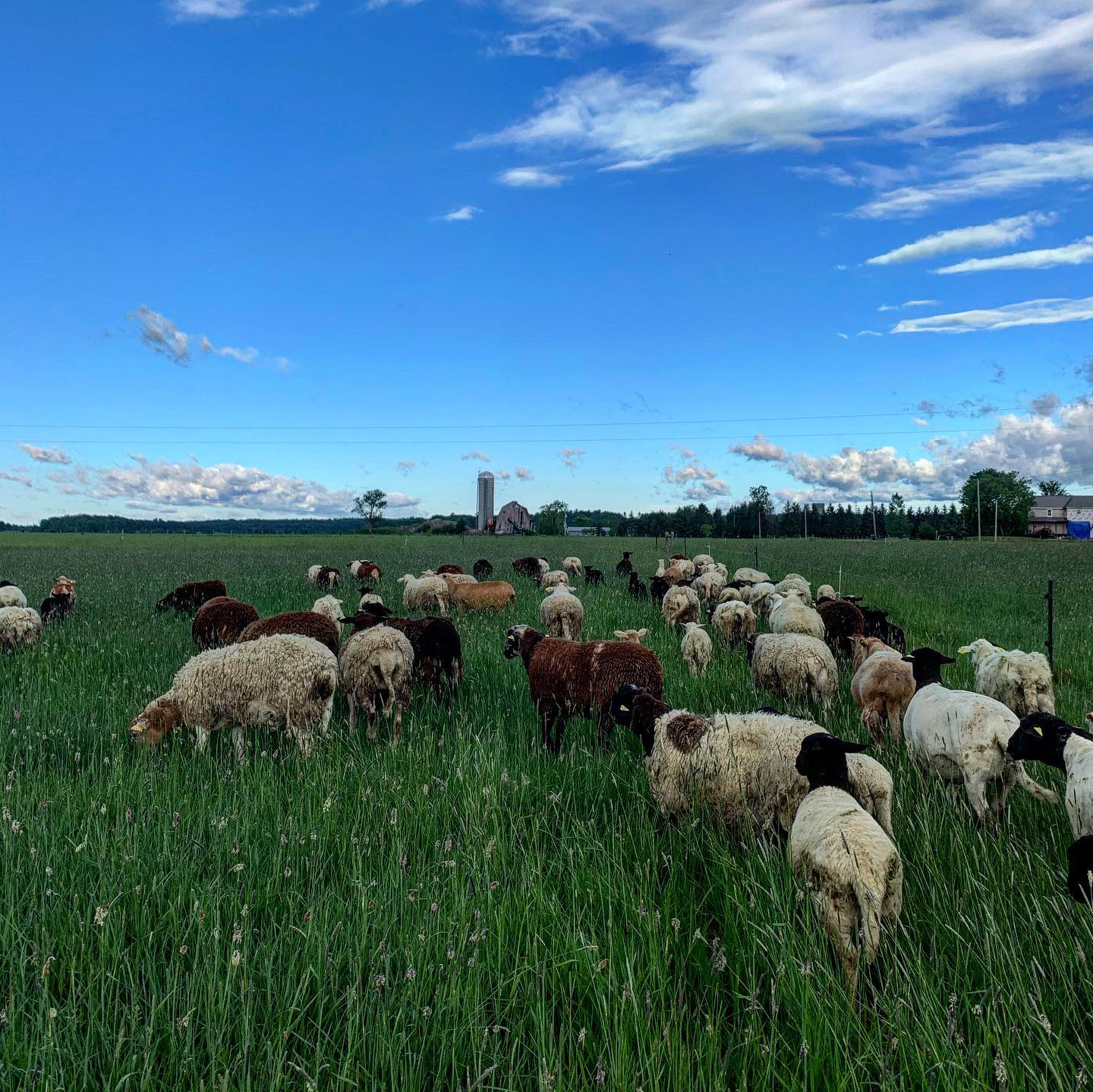
Here’s What Gives Grass-Fed Lamb Its Unbeatable Flavor
What's more satisfying than having an evening with a freshly grilled herb-rubbed leg of grass-fed lamb...
...or a fragrant lamb stew with fresh vegetables, simmered all day long...
...or a rack of lamb drizzled with red wine sauce.
Lamb is naturally tender, But have you ever wondered what gives grass-fed lamb its distinctive flavor?
The secret is in the breed...and in their diet
We raise Dorper and Katahdin sheep, breeds known as “hair sheep.” These sheep grow thick coats of hair in the winter and shed naturally in the spring. Because of this, they thrive under conditions that are difficult for other breeds – the hot summers and cold winters typical in Québec.
They also grow well on pasture systems. Lambs graze in the summer, and are fed green second-cut hay in the winter. This fresh, natural diet allows them to grow quickly and are extremely healthy in the most natural way. We raise our lamb until they are 14 months old (Also known as Hogget) As a result, our lambs have a flavor that is pronounced and very tender.
The flavor of grass-fed lamb is easy to adjust
Lambs that are exclusively grass-fed have a delicious flavor. You can adjust the flavor further by choosing the right cut of meat for the dish you are cooking. A lamb curry calls for a strong flavor. Cuts like shoulder, shank, and leg provide this. Lower fat cuts such as rack of lamb, loin chops, or rib chops, are milder and a bit sweeter.
Trimming the fat also produces a milder flavor. Leaving the fat intact while cooking lamb will produce a stronger one.
For more flavor, try cooking your lamb with bones intact for a fuller, more complex flavor. Imagine simmering bones to make a rich, brothy stock. When you leave the bones in, some of this flavor will come through in your dish.
And of course you can add spice! Think earthy cumin, pungent garlic, or evergreen rosemary. Oregano adds a Mediterranean accent, while curry suggests India.
Rotational grazing means happier sheep
Grass-fed lamb is not only tastier, but it’s more animal-friendly. Back in the days of large bison herds, ruminants moved constantly from one grazing area to another. Ranchers mimic this process by moving grass-fed sheep to a new pasture area each day.
These grazing sheep get a varied diet, because they find new and slightly different grasses and clovers in each area. This process is not only more natural, but also allows sheep to eat the tips of the grasses and move on...thus avoiding most of the worms and parasites that live near the grasses’ roots.
Grass-fed lamb help regenerate soil
Old fashioned grazing practices like these also provide a natural, slow-release fertilizer for the soil. Sheep manure is low in nitrogen and high in potassium and phosphorus, all of which are necessary for plant growth.
Strong, healthy plants in turn defend against pests, which then protects the sheep. Together, this creates a natural, healthy ecosystem, where sheep, grasses, and soil support each other.
A natural, varied diet for lambs means better nutrition
Grass-fed lamb is a rich source of vitamin B12, selenium, niacin, iron, and a variety of other essential vitamins and minerals, and contains more heart-healthy omega-3 fatty acids than grain fed lamb. A great nutrient dense option of protein!
Our lamb is a seasonal product in the summer (July). We do not sell it year round because we have very high standards for the meat quality. We believe it is at its best in July when the lambs are 14 months.
Get on our list for summer lamb now, as we have a limited amount!

